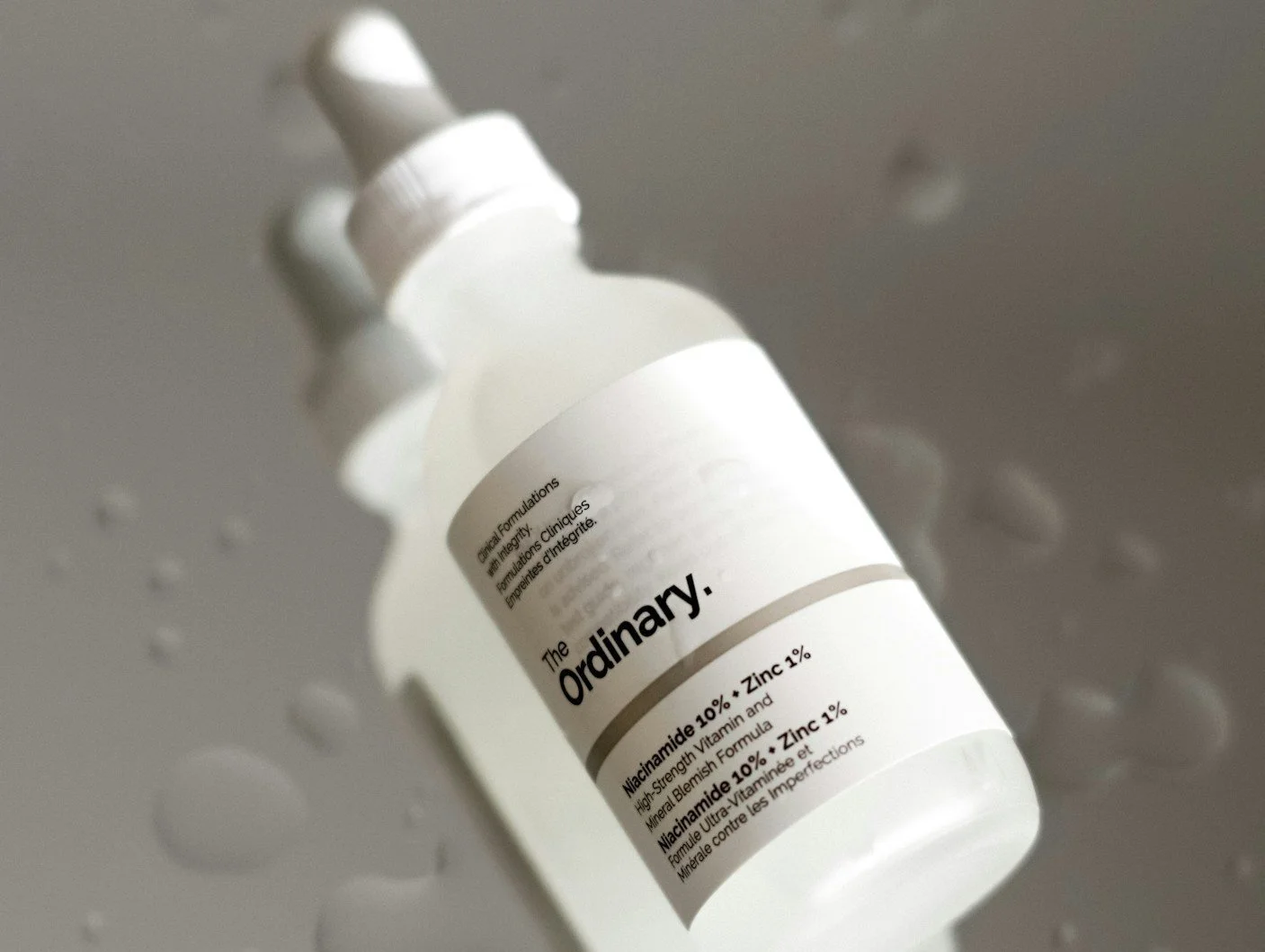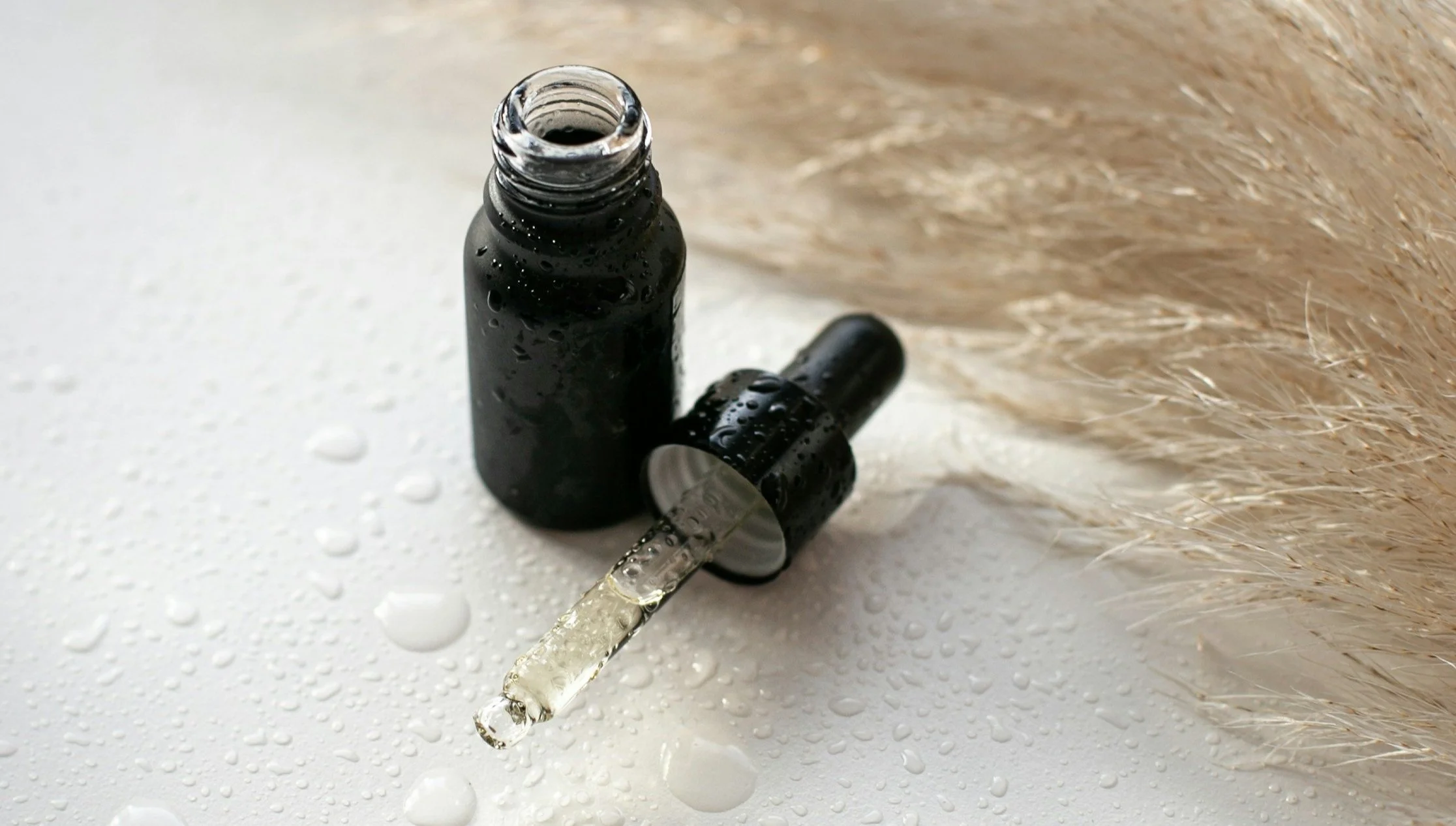Your Ultimate Guide to Niacinamide
Are you looking to get smoother, more even skin? (I mean…who isn’t?) Enter niacinamide, the gentle, yet highly effective, skincare ingredient that can help transform your skin. In this ultimate guide to niacinamide, we’ll go over the basics of this ingredient and how it can help you on your way to smooth and glowing skin:
So if you’re looking to unlock the full potential of niacinamide in your skincare routine…Let’s dive in.
What is Niacinamide?
Niacinamide, also known as nicotinamide or vitamin B3, is a water-soluble vitamin that has become a powerhouse ingredient in the skincare world. Unlike topical niacin, niacinamide is a gentle, non-acidic form of vitamin B3 that offers multiple benefits for your skin such as evening out skin texture and tone. It's found in many foods like meat, fish, nuts, and green vegetables, and has gained significant popularity in skincare formulations due to its wide-ranging positive effects on skin health.
What Does Niacinamide Do for Skin?
At its core, niacinamide works by supporting your skin's natural functions. It plays a crucial role in cellular energy production, helping skin cells function more efficiently. When applied topically, niacinamide helps strengthen the skin's protective barrier, which is essential for maintaining hydration and protecting against environmental stressors. It does this by stimulating the production of ceramides, which are lipids that make up a bulk of your skin barrier and are key to maintaining your barrier’s integrity.
Niacinamide also helps regulate sebum production, making it particularly beneficial for those with oily or combination skin. By balancing oil production, niacinamide can help prevent clogged pores and reduce the occurrence of breakouts. Additionally, it has anti-inflammatory properties that can help calm redness and irritation, making it a good option for sensitive or reactive skin.
Niacinamide Benefits
As alluded to above, Niacinamide offers a multitude of skincare benefits that make it such a popular ingredient:
Reduces Hyperpigmentation: Niacinamide inhibits melanin transfer to the skin's surface, helping to fade dark spots, sun damage, and uneven skin tone. Studies have shown it can effectively lighten hyperpigmentation with consistent use.
Minimizes Pore Appearance: By regulating sebum production and improving skin elasticity, niacinamide can make pores appear smaller and less noticeable.
Anti-Aging Properties: Niacinamide stimulates collagen production and helps protect skin from oxidative stress. This can reduce the appearance of fine lines and wrinkles, promoting a more youthful complexion.
Improves Skin Texture: Niacinamide enhances your skin's natural exfoliation process, leading to smoother, more refined skin texture.
Supports Skin Barrier Function: By increasing ceramide production, niacinamide helps your skin retain moisture and become more resilient against environmental damage.
Helps Manage Acne: Niacinamide’s sebum-regulating and anti-inflammatory properties can help reduce acne breakouts and manage overall skin clarity.
What Can and Can’t Be Used With Niacinamide
With so many skincare ingredients out there, it’s hard to know what should or shouldn’t be combined with each other. (I know I’m not alone in googling, “can I use niacinamide with retinol?” 😅). Below are some ingredients to be aware of when using niacinamide in your skincare routine.
Ingredients That Work Well With Niacinamide
Hyaluronic Acid: Works well with niacinamide to enhance hydration, plump, and moisturize skin.
Vitamin C: Research shows niacinamide and vitamin C can be used together, offering complementary brightening and antioxidant benefits.
Zinc: Works with niacinamide to reduce inflammation and support skin healing.
Ceramides: Boosts barrier function and hydration.
Ingredients to Be Careful of When Mixing With Niacinamide
Retinol (Vitamin A): While not inherently incompatible, using retinol with other actives could lead to irritation. If mixing, start with lower concentrations and introduce gradually to prevent potential irritation.
AHAs/BHAs: Can be used together, but monitor skin's reaction and start with lower concentrations to avoid over-exfoliation.
Best Niacinamide Serums
Below are three serums that I’ve tried and loved. All have different ingredients mixed with niacinamide to optimize different benefits. Hopefully they can work well for you, too!
Best Budget Option:
Best for Fading Dark Spots:
Best for Calming and Hydration:
To close out…Niacinamide is a versatile, scientifically-backed ingredient that can address multiple skin concerns and be an excellent addition to your skincare repository. I hope this guide can encourage you to incorporate it into your skincare routine and reap its benefits 💛





